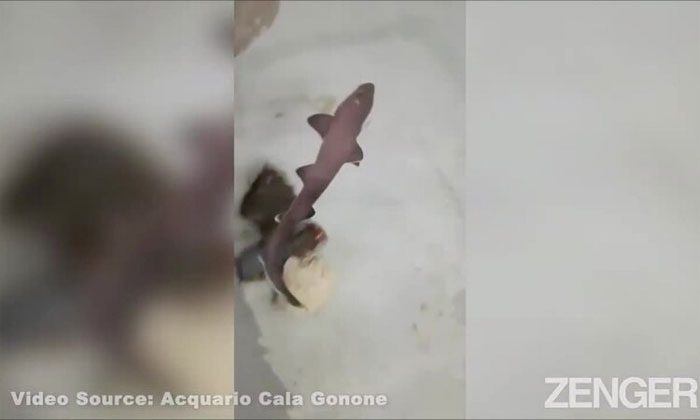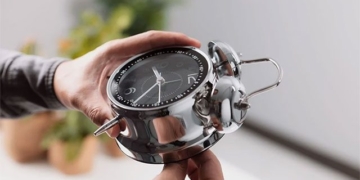After a long time living in captivity, a female Mustelus mustelus shark has given birth to a healthy pup, which is also female.
The Mustelus mustelus at the Cala Gonone Aquarium in Sardinia, Italy, gave birth after a decade of cohabitation with another female and no contact with males, Live Science reported on August 26. The pup, named Ispera, meaning “hope” in Maltese, is a female.
This rare phenomenon is called parthenogenesis, the ability of females to self-fertilize their eggs in harsh conditions. Scientists have observed this phenomenon in over 80 species of vertebrates, including sharks, fish, and reptiles. However, this may be the first recorded instance of parthenogenesis in Mustelus mustelus sharks.
“It is very difficult to detect parthenogenesis in the wild, so we only really know about this phenomenon through animals kept in captivity,” said Demian Chapman, director of the shark and ray conservation program at the Mote Marine Laboratory and Aquarium in the United States.
Parthenogenesis may not occur frequently, but it has been observed in many shark species. “About 15 species of sharks and rays have been recorded as having undergone parthenogenesis,” Chapman stated. However, he believes that most species may have this capability. Parthenogenesis occurs in both oviparous (egg-laying) and viviparous (live-bearing) sharks.
In nature, parthenogenesis may serve as a last resort for females that cannot find a mate due to separation from their kind or human influences, such as climate change and overfishing, or due to natural selection pressures like predation and disease, leading to the death of all suitable males. In aquariums, living apart from males or prolonged isolation can trigger this natural response in females. Observations have shown that some sharks undergo parthenogenesis multiple times over many years, while others may alternate between parthenogenesis and sexual reproduction when exposed to mates.

The pup is currently healthy at the Cala Gonone Aquarium.
Parthenogenesis consists of two forms: automixis and apomixis. Automixis has been documented in sharks, where the mother’s genes are slightly mixed to create a pup similar to the mother but not an exact clone. A pup born through apomixis is an exact clone, but this form is more common in plants.
“Parthenogenesis is essentially a form of inbreeding due to the significant reduction in genetic diversity of the offspring,” Dudgeon explained. Consequently, pups born through parthenogenesis may have reduced survival abilities.
“The rate of embryonic failure in parthenogenetic pups is very high. However, if they survive, many can lead normal lives, and some may even reproduce,” Chapman noted.
It is very challenging to accurately determine the cause of death for shark pups, whether they are parthenogenetic or born normally. “The death of small sharks in captivity and in the wild is common, so it’s not easy to pinpoint the reason,” Dudgeon said.
The health status of Ispera appears to be good. The animal is expected to have a relatively normal life in captivity.





















































